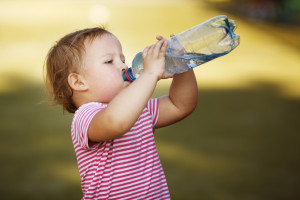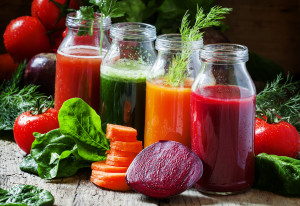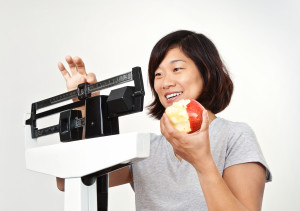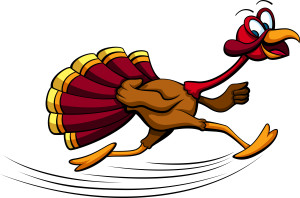 As Buffalonians, we’ve all been there. You’re chatting with a new acquaintance from out of state, and no matter what time of the year it is, when you tell them you live in Buffalo they ask, “So is it snowing there now?” There is a national misperception that Western New York does not benefit from a wide range of seasons. In reality, the average temperature in Buffalo during the month of July is 80 degrees. During summer months, it is important that all women, regardless of age or activity level, stay hydrated. As we enjoy the dog days of summer, understand the signs of dehydration, and how you can stay cool and hydrated in Buffalo.
As Buffalonians, we’ve all been there. You’re chatting with a new acquaintance from out of state, and no matter what time of the year it is, when you tell them you live in Buffalo they ask, “So is it snowing there now?” There is a national misperception that Western New York does not benefit from a wide range of seasons. In reality, the average temperature in Buffalo during the month of July is 80 degrees. During summer months, it is important that all women, regardless of age or activity level, stay hydrated. As we enjoy the dog days of summer, understand the signs of dehydration, and how you can stay cool and hydrated in Buffalo.
H20 How Tos
We need to continually replace the water in our bodies that we lose urinating, perspiring, and even breathing. Our bodies use water to flush toxins, transport nutrients, and protect the sensitive tissues of the nose and mouth. Women need approximately 11 cups of water per day. If you’re wondering how you can possibly drink that much water, you should know that not all of your fluid intake needs to come directly from cups of water. About 20 percent of your daily fluid intake will come from food, and that percentage will increase if you choose water-rich foods like fruits and vegetables such as tomatoes and oranges.
The Heat Factor
While it is important to consume an ample amount of water daily, special consideration should be taken during warm weather months. On hot days increase your fluid intake, regardless of your activity level. Don’t wait until the first signs of thirst to reach for the water pitcher. Follow these tips to stay hydrated during the summer:
- Hydrate early and often. It’s easier to maintain your fluid balance if you start out in a well-hydrated state.
- Keep a water bottle on hand, and full, so you can frequently consume water throughout your day.
- Drink extra fluids after exercising.
- Do not try to over-compensate for periods without hydrating by drinking large amounts of water all at once. Doing so could lead to hyponatremia, a condition that occurs when the level of sodium in your blood is abnormally low.
Dehydration Signs and Symptoms
If you experience any of the following, you may already be dehydrated:
- Dry or sticky mouth
- Tiredness or lethargy
- Headaches or fuzzy-headedness
- Reduced urine output or urine that is dark yellow in color
- Sunken or dry eyes
An Important Note about the Elderly
While it is important for everyone, regardless of age or activity level, to remain hydrated, the hottest days of the year can be especially dangerous for the elderly, sick, and frail. As we age, our bodies’ water content decreases. In addition, certain medications that may be taken by the elderly may make them more susceptible to dehydration. To further complicate matters for the elderly, some conditions that impact comprehension, such as Alzheimer’s and dementia, can impact one’s ability to remember to stay hydrated. Dehydration, especially for the elderly, can cause serious sickness, and in the worst cases, even death. If you are caring for an elderly loved one, make sure they consume eight ounces of water every time they take medication. Make sure water is easily accessible to them throughout the day, and check-in with your loved one frequently to make sure they are not experiencing any signs or symptoms of dehydration.
More
 With fad diet and celebrity endorsers promising “get slim quick” benefits of all liquid and juice-based diets, it sounds too good to be true. Unfortunately for those counting down the weeks until their next bikini-necessary vacation, the juice diet trend may actually be TGTBT. All juice diet programs claim to offer such benefits as detoxification, weight-loss, and overall wellness, but research shows that such extreme diets may cause more harm than good.
With fad diet and celebrity endorsers promising “get slim quick” benefits of all liquid and juice-based diets, it sounds too good to be true. Unfortunately for those counting down the weeks until their next bikini-necessary vacation, the juice diet trend may actually be TGTBT. All juice diet programs claim to offer such benefits as detoxification, weight-loss, and overall wellness, but research shows that such extreme diets may cause more harm than good.
Typically, on an all juice diet, a person limits themselves to only fruit juices, water, and fresh vegetables for any length of time from a few days to a few weeks. On average, the diet may restrict a person’s calories to only 1,000 to 1,200 per day. If cutting calories is the recipe for losing weight, how can all juice diets not produce results, and what other dangers might they pose?
You may exercise less. When you consume fewer calories, you have less energy, leaving you without the stamina needed to get the recommended 30 minutes of exercise three to five days per week, which is needed for heart, lung, muscle, and mental health.
They won’t satisfy hunger cravings. Without the fiber present in whole fruits and vegetables, an all-juice diet won’t keep hunger at bay, which leaves many people tempted to break their diet by snaking on unhealthy foods, and sabotaging their weight-loss goals.
Despite popular claims, they are not substitutes for whole fruits and vegetables. Juicing removes many nutrients available in whole produce, and despite their claims, scientists have not been able to prove that juicing is healthier than consuming whole foods. You can also order juicers online and make sure you can make healthy choices everyday.
You may consume too many calories. It can be difficult to measure liquid calories. With the average juice beverage offering anywhere from 100 to 350 calories per 16-ounce serving, consuming too much juice could actually increase your overall calorie consumption and sabotage your weight-loss goals.
They deprive you of essential nutrients. By only consuming juices, you eliminate critical nutrients from your body, especially fiber, protein, and fat (yes, you need fat in your diet!)
You may experience side effects. Some liquid dieters report experiencing such side effects as dizziness, nausea, constipation, fatigue and irritability.
You don’t really need to “detox” your system. Your body is able to filter out unwanted substances on its own, which means there really isn’t a need to “cleanse” your system.
They can spike blood sugar levels. Without the fiber found in whole produce, your body will absorb fructose more readily, which can raise blood sugar to unsafe levels.
You may lower your metabolism. When your body doesn’t receive the amount of food it needs for a prolonged period of time, it will adjust by lowering your metabolism to accommodate for the difference – maybe permanently.
It may exposure you to dangerous pathogens. Most juice diets suggest consuming unpasteurized juice, which could increase the chances of exposure to pathogens.
It could deplete your muscles. Depending on your age, size, and weight loss goals, remaining on a diet that is too calorically restrictive may result in your body using muscle tissue instead of fat for energy.
It’s not a proven cure for diseases. While some cleanses claim such miracle benefits as curing cancer, the reality is that no scientific evidence exists that proves an all-liquid diet can cure cancer or other diseases.
It is not a long-term diet solution. Will you lose weight by drastically reducing your calories for a period of time? Most likely yes, but what happens when you revert back to a non-all-juice diet? It is not feasible to remain on an all-liquid meal plan indefinitely, and when you revert back to eating higher calorie foods, you will likely gain back some of the weight you lost.
It can be dangerous for those with compromised immune systems. All juice diets are not healthy options for those women undergoing chemotherapy, diabetics, people with nutritional deficiencies, and people with kidney disease due to the high levels of sugar and potassium in most juices.
Instead of attempting a long-term fad diet, speak with your doctor about healthy ways to lose weight. He/she can help you to devise a weight-loss plan that suits your health goals and your lifestyle. And if you are looking for a new OB-Gyn and are in the Western New York area, we are accepting new patients.
More
 Diabetes is a dangerous health condition in which blood glucose levels rise higher than normal, a state known as hyperglycemia. For those suffering from type II diabetes, since their bodies do not properly use insulin, excess levels of the hormone are produced by the pancreas. Over time, the pancreas cannot create enough insulin to manage glucose levels, resulting in dangerous side effects.
Diabetes is a dangerous health condition in which blood glucose levels rise higher than normal, a state known as hyperglycemia. For those suffering from type II diabetes, since their bodies do not properly use insulin, excess levels of the hormone are produced by the pancreas. Over time, the pancreas cannot create enough insulin to manage glucose levels, resulting in dangerous side effects.
Type II diabetes is the most common form of the disease, representing about 90 to 95 percent of all diagnosed cases. It is estimated that 29.1 million people in the United States suffer from diabetes, 8.1 million of who may be undiagnosed and unaware of their condition. As if these statistics aren’t great enough cause for concern, experts predict that the number of cases of type II diabetes is on the rise. The good news is that many of the risk factors for type II diabetes are preventable. By making conscious choices to lead a healthy lifestyle, you can help to reduce or even eliminate the likelihood for being diagnosed with the type II diabetes. If you fear that you or someone you love may be at risk for the disease, read these healthy tips that will help you lower your odds of being diagnosed with this painful, and potentially deadly condition.
Manage Your Weight.
An overweight or obese body mass index (BMI) is one of the greatest risk factors for developing type II diabetes. In a recent study, individuals who lose only seven percent of their initial body weight and exercising regularly reduced their risk of developing diabetes by almost 60 percent.
Get Active.
The first step toward diabetes prevention is getting out and getting active. Regular physical activity can help you to lower your weight and blood sugar levels, and increase your sensitivity to insulin, all things that will help you to lower your risk of developing type II diabetes.
Quit Smoking.
As if you didn’t need another reason, if you are a smoker, it’s time to kick the smoking habit. Tobacco use can increase blood sugar levels that lead to insulin resistance. Studies show that individuals who smoke more than 20 cigarettes a day almost double their risk of developing diabetes compared to nonsmokers.
Eat Foods High in Fiber.
This simple ingredient can make a significant difference in lowering your risk of developing diabetes. Fiber helps to improve blood sugar control, lower the risk of heart disease, and promote weight loss. In addition, when you eat fiber, you are likely to feel fuller, for longer, reducing your desire to snack on sugary, calorically-dense foods. Fruits, vegetables, beans, whole grains, seeds, and nuts are all foods high in fiber. Incorporate more of these healthy foods into your diet to help manage your diabetes risk factors.
Choose Whole Grains.
There are many benefits of incorporating whole grains into your diet, including reducing your risk for type II diabetes. The mighty whole grain can help you to maintain proper blood sugar levels. When browsing the aisles of the grocery store, choose whole grain product options whenever possible, especially when choosing pastas, breads, and cereals.
Eat Smaller Meals.
When you eat only one or two large meals per day that are high in calories, fat, sugar, and/or sodium, your glucose levels spike. Eating more small, well-balanced meals throughout the day can lower your chances of experiencing unsafe spikes in blood glucose levels, and can ultimately lower your risk of diabetes.
Reducing your risk of diabetes is as simple as maintaining a healthy diet and being active every day. If you have questions or need help adopting healthy lifestyle habits, contact your doctor today. And if you are in Western New York and looking for a new Ob-gyn, please consider our practice.
More
We crunch our abs, curl our biceps, and do countless squats to obtain a perfectly rounded butt, so why do we neglect our vaginal muscles? As women, our vaginas are incredibly important and versatile. The vagina acts as the birth canal, an outflow track for menstrual blood, and an in-flow track for sperm. The vaginal muscles can weaken over time, however, due to age, childbirth, and even smoking, resulting in issues such as incontinence. By making an effort to keep the vagina strong over time, women can experience more comfort and confidence as they age.
Signs of Weakened Vaginal Muscles
The signs of weakening vaginal muscles may include:
- Leaking urine when coughing or sneezing, or difficulty emptying the bladder
- Passing gas unintentionally
- Posterior prolapse, a soft bulge of tissue in the vagina that may or may not protrude through the vaginal opening
- A constant sensation of pressure in the pelvic region
How to Strengthen Vaginal Muscles
The secret to stronger vaginal muscles lies in a simple exercise known as the Kegel.
Kegel exercises are clench-and-release movements that can strengthen the pelvic floor — a series of muscles and tissues that forms a sling at the bottom of the pelvis. The pelvic muscles are essential, as they hold our organs in place. Kegels are not difficult, but in order for them to be the most effective, they must be done using the proper technique. As an added bonus, regular Kegel exercises can help women to be more in touch with their bodies, helping them to isolate sensations during sex and enhance their sexual satisfaction.
The best way to learn how to isolate the pelvic muscles is to Kegel during urination. When you start to urinate, clench your muscle to stop the flow of urine, and hold for 10 seconds. This technique will help you to identify how it feels to properly engage the pelvic floor muscles. Once you can easily identify and contract your pelvic muscles, try to incorporate Kegel exercises into your daily routine, ideally doing 50 Kegel contractions that are held for 10 seconds each, every day. Since no equipment is needed, you can Kegel anywhere, at any time. Try to Kegel during stoplights, during TV commercial breaks, or while reading.
With routine Kegeling, most women see improvement in the strength of their pelvic floor muscles within six weeks. If you Kegel regularly but do not see the desired results, talk to your GYN. You may benefit from more intense, dedicated work with a pelvic physical therapist — a specialist who is trained to help women improve the strength of their pelvic floor muscles. If you still aren’t feeling the results you want, your GYN may want to test you for pelvic floor dysfunction, a disorder that occurs when pelvic floor muscles are weak or tight, or when there is an impairment of the sacroiliac joint, lower back, coccyx, or hip joints. The majority of women though, will feel improvement through the simple addition of Kegel exercises into a daily routine, and as a bonus, will finally feel productive during television commercial breaks.
More
 How to Enjoy the Holidays without Adding to Your Waistline
How to Enjoy the Holidays without Adding to Your Waistline
The holidays are a time for family, friends, and quality time spent together. They are also a time for mashed potatoes, stuffing, and hot apple pie. If you are one of the millions of Americans who finds themselves gaining even a few pounds during the holiday season, know that this year, you can maintain, and not gain weight by simply making small sacrifices, smart choices, and staying active. Before you pledge an oath to skip all of your favorite holiday fare, review the seven tips below. You can still enjoy all of your most-loved foods this holiday season, without compromising on your health.
- Don’t starve yourself before a holiday meal. While you may think that skipping lunch will help balance out an extra-large dinner, understand that arriving to a holiday meal hungry may encourage you to eat even more than you would have if you had eaten a sensible lunch. If you do arrive hungry to an event, drink a glass of water before you start to nosh on appetizers to try to curb your initial hunger pangs.
- Weigh yourself twice a week. Bi-weekly check-ins with the bathroom scale will help you make sure that you are maintaining, and not gaining during the holiday season. Be sure to weigh yourself at the same time of the day, preferably first thing in the morning before you eat anything, to make sure you get the most accurate readings.
- Pace yourself through happy hour. It may be tempting to overeat when you are surrounded by trays of delicious appetizers, but try to keep in mind that every holiday event is a marathon, not a sprint. Sample just a few of the appetizers that are most appealing to you, and then save the rest of your appetite for the main meal.
- Don’t give-up your exercise routine. The holidays are often packed with events, parties, shopping, and more social obligations than any other time of the year. Don’t skip your exercise routine during the holidays to accommodate your busy schedule. Make sure to exercise for at least 30 minutes a day, three to five days a week.
- Plate your food responsibly. Whether you are at a buffet or eating family style, curb the temptation to pile your plate with teetering towers of food doused in a layer of gravy. Take the smallest plate available and select reasonable portion sizes of just those items you want the most.
- Don’t skip desserts – but limit your portion sizes. You don’t have to skip your Mom’s famous, once-a-year apple pie, but practice the three-bite rule. Savor the first taste, a second satisfying bite, and a lingering third forkful – that’s it.
- Chew slowly and savor the taste of your food. During this most decadent and activity-packed time of the year, make sure that you are enjoying every meal, and not simply rushing through them and over-eating in the process. Eating too fast can result in extra pounds.
This holiday season, don’t deny yourself your favorite annual indulgences, but do monitor your overall consumption and stay active. With proper awareness and attention paid to your meals this holiday season, you can slip into the New Year without having gained an ounce.
For more ideas on how to stay healthy this holiday season, you might find the following articles helpful:
How to Have a Happy and Healthy Holiday Season
Stay Trim with these Healthy Eating Tips
More
 As Buffalonians, we’ve all been there. You’re chatting with a new acquaintance from out of state, and no matter what time of the year it is, when you tell them you live in Buffalo they ask, “So is it snowing there now?” There is a national misperception that Western New York does not benefit from a wide range of seasons. In reality, the average temperature in Buffalo during the month of July is 80 degrees. During summer months, it is important that all women, regardless of age or activity level, stay hydrated. As we enjoy the dog days of summer, understand the signs of dehydration, and how you can stay cool and hydrated in Buffalo.
As Buffalonians, we’ve all been there. You’re chatting with a new acquaintance from out of state, and no matter what time of the year it is, when you tell them you live in Buffalo they ask, “So is it snowing there now?” There is a national misperception that Western New York does not benefit from a wide range of seasons. In reality, the average temperature in Buffalo during the month of July is 80 degrees. During summer months, it is important that all women, regardless of age or activity level, stay hydrated. As we enjoy the dog days of summer, understand the signs of dehydration, and how you can stay cool and hydrated in Buffalo.


